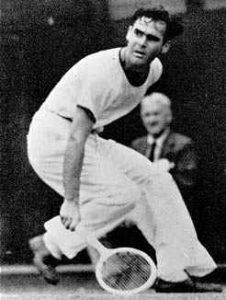
This post is devoted to a reformulation of the equilibrium measure problem of potential theory into an obstacle problem for minimal surfaces, advertised by Sylvia Serfaty.
Riesz kernel. On $\mathbb{R}^d$, for $-2 < s < d$, $$ K_s=\frac{1}{s\left|\cdot\right|^s} \quad\text{with the convention}\quad K_0=-\log\left|\cdot\right|. $$ The special case $K_{d-2}$ is the Newton or Coulomb kernel. The lower bound $-2 < s$ ensures the strict convexity of an energy functional (see below) while the upper bound $s< d$ ensures integrability of the kernel and well definiteness of the potential $K_s*\mu$ of natural measures.
Riesz energy. The Riesz energy of a probability measure $\mu$ on $\mathbb{R}^d$ is
$$
\mathcal{E}_s(\mu)=\iint K_s(x-y)\mu(\mathrm{d}x)\mu(\mathrm{d}y).
$$ The Riesz energy with external field $V:\mathbb{R}^d\to\mathbb{R}$ (taken continuous) is
$$
\mathcal{E}^V_s=\iint(K_s(x-y)+V(x)+V(y))\mu(\mathrm{d}x)\mu(\mathrm{d}y)
=\mathcal{E}_s(\mu)+2\int V\mathrm{d}\mu.
$$ This functional is strictly convex and has compact sub-level sets with respect to the topology of weak convergence of probability measures, in particular it is lower semi-continuous.
Equilibrium measure and Frostman conditions. The equilibrium measure $\mu_{\mathrm{eq}}$ is
$$
\mu_{\mathrm{eq}}=\arg\min_\mu\mathcal{E}^V_s(\mu).
$$ It depends on $d,s,V$. Since $\mathcal{E}^V_s$ is a nice quadratic form, its minimizer is characterized by nice Euler-Lagrange equations, which are known in this context as Frostman conditions. Namely $\mu_{\mathrm{eq}}$ is the unique probability measure $\mu$ for which there exists a constant $c$ such that
$$ K_s*\mu+V
\begin{cases}
=c&\text{on $\mathrm{supp}(\mu)$}\\
\geq c&\text{everywhere}
\end{cases}.
$$
Fundamental solution. There exists a positive linear operator $L_s$ such that
$$
L_s K_s=\delta_0,\quad K_s=(L_s)^{-1}.
$$ More generally, for a probability measure $\mu$ on $\mathbb{R}^d$, the Riesz potential $U:=K_s*\mu$ satisfies
$$
L_s U=\mu.
$$ The operator $L_s$ is essentially equal to a (possibly fractional) power of the Laplacian
$$
L_s=c_{s,d}(-\Delta)^{\frac{d-s}{2}},
\quad\text{in particular}\quad
L_{d-2}=-c_d\Delta.
$$ The Coulomb case $s=d-2$ is the unique value of $s$ for which the operator $L_s$ is local namely $L_sf(x)$ depends on $f$ locally at $x$ only. In this case we can apply $L_{d-2}$ to the Frostman variational characterization of $\mu_{\mathrm{eq}}$ to get that in the sense of distributions,
$$
\mu_{\mathrm{eq}}=\frac{\Delta V}{c_d}
\quad\text{on the interior of }\mathrm{supp}(\mu_{\mathrm{eq}})
$$ (in particular $\mu_{\mathrm{eq}}$ has no support on $\{\Delta V<0\}$). When $s=d-2$ and $V=\left|\cdot\right|^2$ then this can be used to prove that $\mu_{\mathrm{eq}}$ is the uniform probability measure on the unit ball. Beyond the Coulomb case, the Riesz kernel is no longer local, and the computation of the equilibrium measure becomes more difficult.
Obstacle problem. Let us express the Frostman conditions in terms of the Riesz potential $U=K_s*\mu$, the operator $L_s$, and the function $\varphi=c-V$ :
$$
\begin{cases}
U & \geq\varphi\\
L_s U & \geq0,\text{ and $=0$ on $\{U>\varphi\}$}
\end{cases}
$$ in other words we have the “dichotomy”
$$
\min(U-(c-V),L_s U)=0.
$$ This is called an obstacle problem, where $U$ is modelling the height of a membrane and $\varphi$ an obstacle. Since $\mathrm{supp}(\mu)$ is unknown, it is a free boundary problem. The analysis of such problems in terms of existence, uniqueness, and regularity is still an active subject of research. It has also a probabilistic side, explored notably by Getoor, Chung, and others, related to first and last passage times of Lévy processes. The obstacle problem offers an alternative way to compute equilibrium measures. Last but not least, the obstacle problem admits a variational formulation with a Dirichlet energy, which is actually the convex dual problem of the equilibrium measure problem, and the probabilistic side corresponds in a way to a probabilistic interpretation of the modified Robin problem versus the Dirichlet problem.
About the links between potential theory and Markov processes, let us recall, following Hunt, that the potential kernel associated to a Markov semigroup ${(P_t)}_{t\geq0}$ is $$\int_0^\infty P_s\mathrm{d}s,$$ well understood when writing $P_s=\mathrm{e}^{-sL}$ where $-L$ is the infinitesimal generator, since formally $$\int_0^\infty\mathrm{e}^{-sL}\mathrm{d}s=L^{-1}\circ(\mathrm{id}-\pi_{\ker L}).$$
Further reading.
- Caffarelli, Luis A.
The obstacle problem revisited
J. Fourier Anal. Appl. 4, No. 4-5, 383-402 (1998) - Silvestre, Luis
Regularity of the obstacle problem for a fractional power of the Laplace operator
Commun. Pure Appl. Math. 60, No. 1, 67-112 (2007) - Armstrong, Scott N. and Serfaty, Sylvia and Zeitouni, Ofer
Remarks on a constrained optimization problem for the Ginibre ensemble
Potential Anal. 41, No. 3, 945-958 (2014) - Ros-Oton, Xavier and Serra, Joaquim
The Dirichlet problem for the fractional Laplacian: regularity up to the boundary
J. Math. Pures Appl. (9) 101, No. 3, 275-302 (2014) - Getoor, Ronald K.
First passage times for symmetric stable processes in space
Trans. Amer. Math. Soc., 101, 75-90, (1961) - Blumenthal, Robert M. and Getoor, Ronald K.
Markov processes and potential theory
Reprint of the 1968 ed. Mineola, NY: Dover Publications vi, 313 p. (2007) - Chung, Kai Lai
Probabilistic approach to the equilibrium problem in potential theory
Ann. Inst. Fourier 23, No. 3, 313-322 (1973) - Bogdan, Krzysztof and Grzywny, Tomasz and Ryznar, Michał
Heat kernel estimates for the fractional Laplacian with Dirichlet conditions
Ann. Probab. 38, No. 5, 1901-1923 (2010) - Donatella Danielli
An Overview of the Obstacle Problem
Notices of the American Mathematical Society 67(10) 1487-1497 (2020) - Saff, Edward and Totik, Vilmos
Logarithmic potentials with external fields
Grundlehren der Mathematischen Wissenschaften. 316. Berlin: Springer. xv, 505 p. (1997)
Especially Section IV.7.1 “Contact Problem of Elasticity” pages 246-248 - On this blog
Unexpected phenomena for equilibrium measures
June 2022